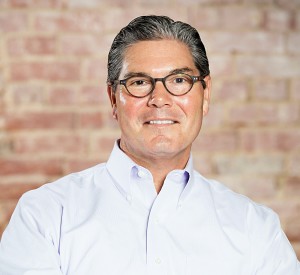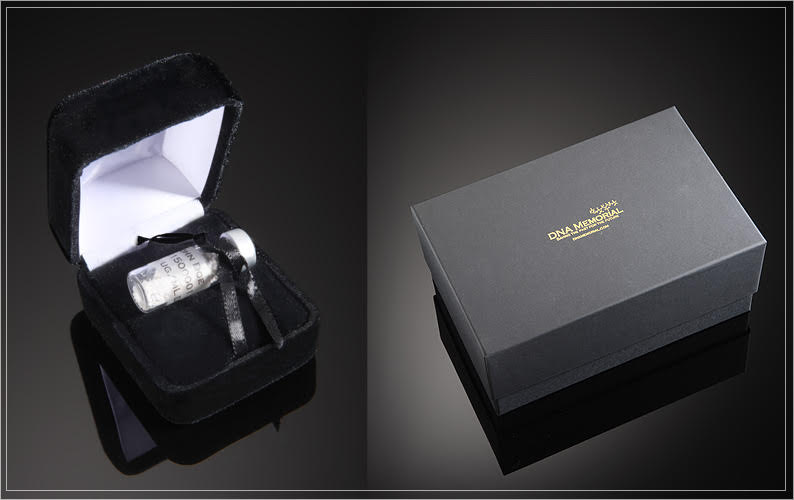
Keepsakes containing the DNA of a loved one
(Credit: DNAmemorialuk.com)
Today, in the second part of a two-part interview, SevenPonds speaks with Jeff Harbeson, the CEO of CG Labs in Ontario, Canada and the founder of Family Choice Funerals and Cremations, a Virginia-based company with a vision of becoming the only first six sigma operating platform and franchise funeral home model in the United States. The Harbeson Group’s innovative spirit is founded on the principle of providing the consumers with all the information needed to make an educated funeral decision. Combining his military and business expertise, Jeff’s entrepreneurial spirit puts him in the forefront of funeral and DNA markets, while his funeral blog, The Funeral Commander offers a distinct view of the funeral industry based on Jeff’s own extensive experience in the field. Today Jeff is explaining why and how you can store your own or your loved one’s DNA, and discussing the services that the DNA Memorial can offer.

Jeff Harbeson
(Credit: Myfunteralfinance.com)
Julie: Can I get a sample while I’m still alive, and how is it done?
Jeff: If you wanted to have your own DNA, we can send you a kit. It’s a non-invasive process using two cheek-swabs and 10-15 hair samples with bulbs. We’re also creating a new brand — Babystpot.ca — that provides a new child ID opportunity for parents and is available on the Secure My DNA site under Secure Child DNA tab.
Julie: Why can’t we just store DNA from lock of hair, for example, instead of using your services?
Jeff: If you store your own DNA, what you are storing is Mitochondrial DNA that says, ‘I’m Julie,’ for example. DNA in itself is a long strand of indiscriminate letters that are all in one sentence that are very fragile and can break down over time. After two years from now, we could say, ‘It’s Julie,” but we can’t say who Julie was. Our process allows DNA to stay in its purest form.
“We want to say, ‘Hey look, consumer, before your loved one is cremated, consider that you may also be destroying important info.’ ” — Jeff Harbeson

Secure Child DNA offers parents the custody of the child’s DNA
(Credit: DNAmemorialorder.com)
Julie: Why can I order a kit if I’m still alive, but to order a kit for a dead loved one, I have to go through a funeral service provider?
Jeff: A funeral service provider will most likely be in possession of the body at their embalming room in the funeral home. For safety reasons (biohazards, etc.), funeral directors are the most suitable for taking samples from the deceased. A consumer may order a kit from us direct and ask a funeral director to take the sample.
Julie: DNA memorial sounds like a very interesting idea. Why don’t all funeral businesses offer it?
Jeff: Funeral industry is a very closed industry. Even though they can financially benefit from it, they don’t like to do anything different. I just gave a speech ‘DNA is Alive in the Death Industry.’ We are spending as much time talking to consumers about our services as we do to funeral directors.
Julie: Why is it important for funeral homes to offer this service?
Jeff: Cremation process is irreversible. When we cremate a body, DNA is lost and destroyed. That is very significant when family cremates a loved one – their genetic info is destroyed forever. We want to say, ‘Hey look, consumer, before your loved one is cremated, consider that you may also be destroying important info.’
Julie: Because of pop culture influence, one of the first things that came to my mind was: what if these DNA samples are used in the future for cloning?
Jeff: So far we had no one who has breached this subject.

DNA Home Banking Vial
(Credit: DNAmemorialuk.com)
Julie: You also offer memorial products, portraits and jewelry as part of your services. How do you incorporate DNA into these items?
Jeff: What we have the ability to do is we can take a portion of the DNA from the preserved sample and use it in the keepsake. Our first piece of jewelry was ordered by a woman from Ireland for her nine-year-old daughter who had died. She purchased a vial and a keepsake and was able to keep a part of her daughter close to her by wearing the jewelry, and use the DNA sample for her other daughter to monitor the same disease.
Julie: Can a sample be extracted from a keepsake too?
Jeff: You cannot extract from a keepsake, however with every piece of jewelry or a keepsake, the consumer receives a Home Banking sample as well.
My loved one has moved on, but the DNA is alive in this capsule. How important is it that their genetic record (DNA) is still alive? — Jeff Harbeson
Julie: How can this process change people’s view of death?
Jeff: That’s a question you can ask yourself. My loved one has moved on, but the DNA is alive in this capsule. How important is it that their genetic record (DNA) is still alive?
Julie: Jeff, thank you very much for your time.
Jeff: Thank you!
To read part one of our interview with Jeff Harbeson, click here.

 What is DNA Banking? An Interview with Jeff Harbeson, Part Two
What is DNA Banking? An Interview with Jeff Harbeson, Part Two


 The Spiritual Symbolism of Cardinals
The Spiritual Symbolism of Cardinals

 Flawed Kidney Function Test Discriminated Against Black Patients
Flawed Kidney Function Test Discriminated Against Black Patients














